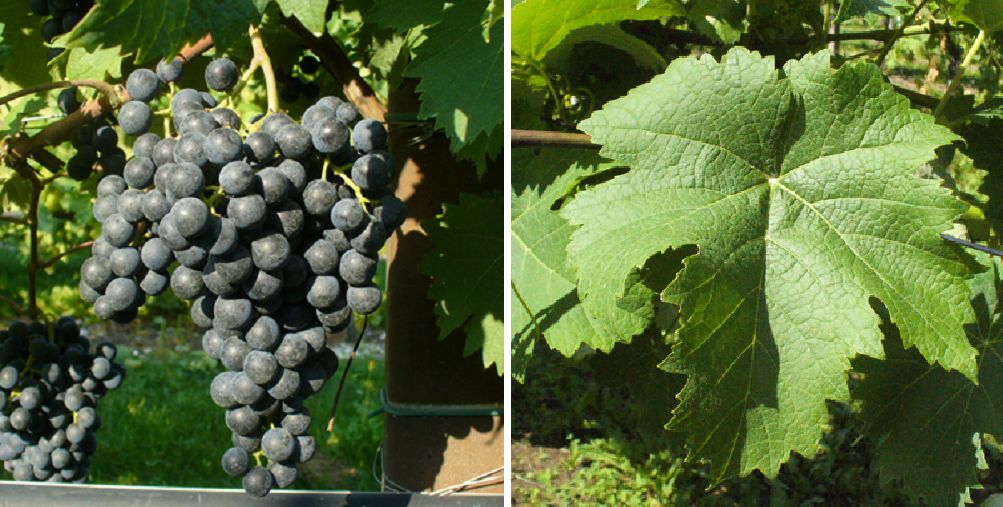The red grape variety originates from Italy. Synonyms or varieties are Balsamea, Balsamina, Barzemin, Berzamino, Borgogna, Marzemina Cenerenta, Marzemina di Napoli, Marzemina Nera, Marzemina Veronese, Marzemino d'Isera, Marzemino d'Istria, Marzemino del Tirolo, Marzemino della Terra Ferma Veneta, Marzemino Nero and Marzemino Trevigiano. The two most common varieties or clones are Marzemino Comune and Marzemino Gentile. Despite seemingly suggestive synonyms or morphological similarities, it must not be confused with the varieties Lambrusco Barghi, Marzemina Nera Bastarda, Merzifon Karasi, Negrone (Marzemino di Padova), Pavana, Uva Rara (Balsamea) or Vertzami. According to DNA analyses carried out in 2006, Marzemino (as well as Lagrein) is the result of a presumably natural cross between Teroldego x an unknown, presumably extinct variety. Additional analyses revealed the parentage of Marzemino for the varieties Marzemina Bianca and Refosco dal Peduncolo Rosso. The hypotheses of a descent from the Slovenian municipality of Marzemin, from Merzifon in Turkey or from Greece proved to be untenable.

The first mention of this very old variety was on 6 June 1409, when a document mentions a banquet in honour of Pope Gregory XII. (1335-1417) and the wines served at the banquet: Marzemino from Gradiscutta, Ramandolo from Torlano, Ribolla from Rosazzo, Verduzzo from Faedis and Refosco from Albana. In the opera "Don Giovanni" by Wolfgang A. Mozart (1756-1791), wine was praised with the exclamation "Versa il vino! Eccellente Marzemino!" a musical monument was set to the wine. Wine was highly valued at the imperial court in Wien. It was described by the botanist Johann S. Kerner (1755-1830) in a catalogue of the grape varieties of the time. In former times, the variety was also a component in the classic Chianti recipe.
The medium to late ripening vine is susceptible to fungal diseases, especially botrytis and powdery mildew. It produces fruity, garnet-red, rather low-tannin red wines with slightly bitter aromas of cherries, plums and violets. The variety is permitted in Veneto in the DOC wines of Breganze, Colli di Conegliano, Garda, Merlara and Trentino, in Lombardy in the DOC wines Botticino, Capriano del Colle, Cellatica, Riviera del Garda Bresciano and Terre del Colleoni, and in Emilia-Romagna in the DOC wine Colli di Scandiano e di Canossa. In 2016, a total of 785 hectares of vineyards were designated in Italy. Small populations also exist in Australia, Brazil, New Zealand and Switzerland (Kym Anderson).
Source: Wine Grapes / J. Robinson, J. Harding, J. Vouillamoz / Penguin Books Ltd. 2012
Images: M.I.P.A.F - National Vine Certification Service
Voices of our members

wein.plus is a handy, efficient guide to a quick overview of the colourful world of wines, winegrowers and grape varieties. In Wine lexicon, the most comprehensive of its kind in the world, you will find around 26,000 keywords on the subject of grape varieties, wineries, wine-growing regions and much more.
Roman Horvath MW
Domäne Wachau (Wachau)